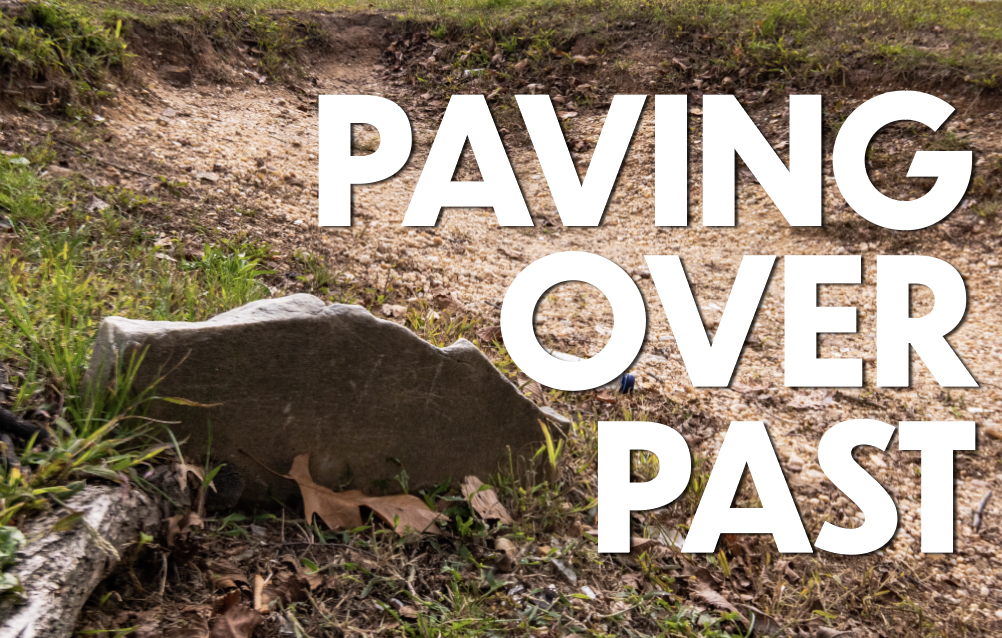
Paving Over Past
By: Mary-Ellen Davis, Senior Staff Writer
With thousands of remains from the original Laurel Cemetery still buried beneath the grounds of the Belair Edison Crossing Shopping Center, one Towson University class has taken it upon itself to learn more about the people who were paved over.
Laurel Cemetery, which originally opened in 1852, was Greenmount Cemetery’s equivalent for the African-American Community, said Patricia Anderson, the Towson professor who teaches the Public History class that has taken on the project.
In its early years, the cemetery had been advertised as a place where loved ones could rest peacefully for eternity. However, this promise didn’t stay intact as the Cemetery fell into disrepair and the city began to expand.
“In the early years of the 20th century the cemetery became quite neglected,” Anderson said. “What it lead to was that it was neglected to the point were there were a lot of people who… wanted to buy [the] property and build on it. What we end up with is a lot of developers going after this property.”
People living in houses that surrounded the cemetery had begun to complain about the state of the grounds, and it was often difficult to tell that it had once been a cemetery at all, Anderson added.
With complaints about the cemetery’s condition surfacing, the city drew up a petition to have it condemned, and the state approved, and developers began to buy and develop on the land. Those who held onto the very few remaining maintained lots took action against the ruling, but there were few laws in place to protect cemeteries from development.
In an attempt to appease the lot holders, the city told them that all the remains from the original Laurel Cemetery had been moved to a new Laurel Cemetery in Carroll County.
“The estimate served five to 7,000 people had been buried there, that all those remains had been moved,” Anderson said. “Apparently, from what they were able to determine, maybe 200 max were reinterred and the rest of them are still in that ground that was at Laurel Cemetery.”
Ground that has since been built over.
The project to tell the story of the Cemetery is being done in two phases, the first of which has already been mostly completed.
“Basically, the cemetery project started with [Coppin State University and the University of Baltimore], the Baltimore African-American Geneology and History Group, and they’re very interested,” Anderson said. “Some of them have people, family members, who are buried at Laurel.”
Phase one, Anderson said, was the archaeological and anthropological portion of the project. Ronald Castanzo, an archaeologist and assistant dean at the University of Baltimore, began efforts to excavate on an unpaved portion of the site in 2015 with a group of students.
The excavation revealed bones and pieces of caskets. Further tests were done which, allowing groups working on phase to see that there were more intact graves underneath of the parking lot.
Phase two is meant to help expand on the biographies of both those who were buried at the site, and those who approved the destruction of the original Laurel Cemetery. Bringing a project like this into the classroom, Anderson said, allows students in the class to act as working historians for the semester.
“One of the things that, I think, is just appalling the more we learn about this project and even what happened to the cemetery is that this would never have happened to Greenmount or any other predominantly white cemetery” Anderson said.
The class is broken into groups to study different aspects of the history of Laurel Cemetery, including corruption, those who were buried at the site, and expanding the biographies of the colored troops who were buried at Laurel.
Student Efrem Evans, who is part of the group studying the corruption behind the demolition of the site, said that when looking at things like these he tries to look through a multicolored lense, but can often find that difficult.
“It’s one of those things where… I’m looking through all the stuff, I’m like ‘Jesus Christ, this is all terrible, how do you people get away with this,’” Evans said.
Jake Brown, another student in the class, feels as though many people don’t associate history with something that could still be fairly recent.
“This happened in the 1950s so that’s very recent,” Brown said. “So when I tell my friends about this project and they’re just like “oh when did that happen” and I say less than one hundred years ago and they’re really caught off guard by it.”

